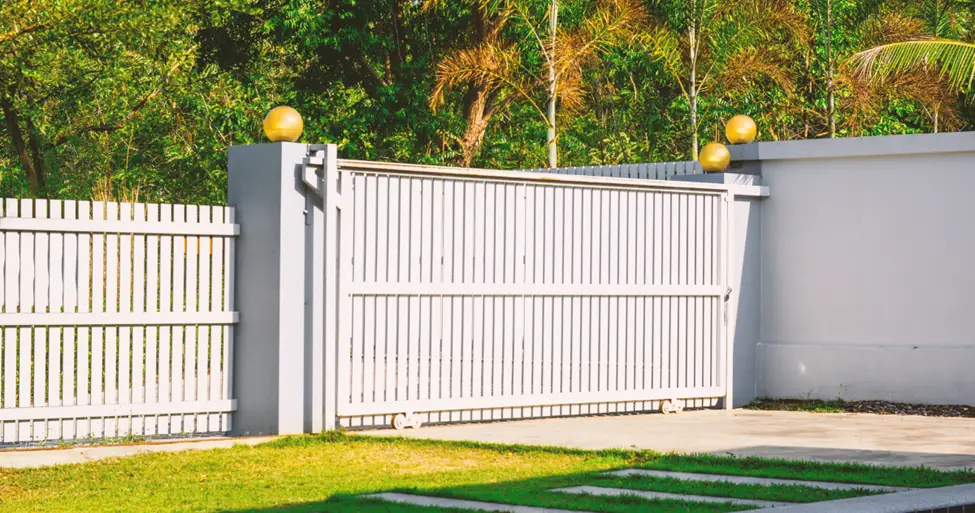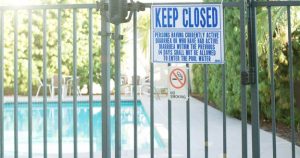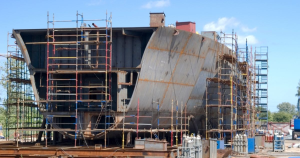Self Closing Gate Requirements: A Simple Guide
Learn self closing gate requirements with clear tips, code notes, and safety facts. Easy guide to pass inspections and protect kids.
In all honesty, I once thought a latch was enough for a pool gate. It turned out that I was wrong.
The more I read case reports and code notes, the clearer it got.
I later understood that top self-closing safety gates and self-latching gates are not just extras.
They’re core safety features. They save lives, and they help you pass inspections.
Just so we’re on the same page:a self closing gate is a gate that shuts itself after someone walks through and latches on its own.
No more worries about gaps, and no more forgetting.
But here’s what I must tell you: not every gate can be used.
There are clear, specific rules about how these gates must be built, installed, and maintained, especially in public pools, workplaces, and homes.
If you ignore them, you’re risking lives and huge fines.
So, in this article, I’ll help you understand the self closing gate requirements that matter, why they exist, and how to meet them without stress.
The Self Closing Gate Requirements To Be Aware Of
In the U.S., regulatory bodies like the Occupational Safety and Health Administration (OSHA), the Centers for Disease Control and Prevention (CDC), and the U.S. Consumer Product Safety Commission (CPSC) set the standard requirements for self closing gates.
I’ll show you the requirements for different environments.
1. Pool gates (homes & apartments)
- Self-closing + self-latching. The gate should close and latch by itself every time. This is the standard, not a bonus.
- Opens away from the water. Gates should swing outward from the pool so a push from a child helps close them, not open them.
- Latch height. Many codes require the release at 54 inches or higher. If it’s lower, place it on the pool side, near the top, with tight spacing around it to block little hands. (California Pool Safety Act; similar patterns appear in local adoptions.)
- Fence height. Go at least 48 inches high. But some places require 60 inches. Check your city’s rules to know what is required.
- No easy climbs. Avoid horizontal rails or cutouts that kids can use as steps. Keep openings under 4 inches; chain-link mesh usually must be tighter.
- Top rail. It must hold 200 pounds of force in any direction except up.
- Mid-rail. It must hold 150 pounds, and this rail sits halfway down.
- Lockable. Use a lock when the area’s not in use (and don’t prop the gate open).
2. Public pools & health guidance
- Four-sided “isolation”fencing is preferred (separates pool from the house/yard) and should include self-closing, self-latching gates.
3. Worksites (ladders, roofs, plants)
- Ladderway openings must have a guardrail with toeboards, and at the entrance you must use a self-closing gate or an offset. This is an OSHA rule, not a suggestion.
Why These Rules & Requirements Matter

Just like I questioned at first, you may ask why all these rules? Well, until I saw the negative facts, I understood why these rules are in place.
The reason it matters is that falls are a leading cause of workplace injuries.
Even Arm-Tex reported in its blog that in 2021 and 2022, over 450,000 workers were injured in falls.
And many of these could have been prevented with proper guarding.
Bic Magazine also mentioned that the OSHA updated gate rules could prevent:
- 29 deaths per year
- 5,842 injuries per year
And the cost of skipping safety is not something you want to be involved in because it adds up fast. So, it’s better not to skip it.
According to OSHA, fines for non-compliant gates can reach:
- $12,675 per violation
- Up to $165,514 for repeat or willful violations
So it’s not just about safety, it’s about protecting everyone and your business.
Other Safety Standards for Self Closing Gates
While OSHA, CDC, and CPSC cover the U.S., other standards apply globally or in specific industries.
| Standard | Region | Main Points |
| EN ISO 14122-3 | Europe | Covers permanent access to machinery, requires self-closing gates |
| ANSI 1264-2017 | U.S. | Focuses on floor marking and visual safety |
| IBC (International Building Code) | Global | Applies to building design, including guardrail rules |
| BS EN 14122-3 | UK | Similar to ISO, requires 50,000+ cycle testing |
Why Self-Closing Gates Matter Till Today
Here are the reasons why it matters:
1. To avoid drowning
Drowning is a silent killer, and the numbers prove it.
According to the CDC, over 4,500 drowning deaths occur each year (2020–2022). That’s more than 500 extra deaths per year compared to 2019.
The CDC’s drowning facts show that children are most at risk, especially around pools at home.
It’s a heartbreaking reminder that prevention isn’t optional; it’s life-saving.
2. Barriers make a difference
The U.S. Consumer Product Safety Commission (CPSC) recommends self-closing, self-latching, outward-swinging gates for every pool area.
Even if you see them as nice upgrades, they’re the bare minimum safety standard.
A properly installed gate automatically shuts and locks, cutting off easy access for kids and pets before an adult can react.
3. Worksites need them too
At industrial and construction sites, OSHA requires self-closing gates at ladderway openings to prevent dangerous falls.
That’s not a guideline. It’s a rule meant to save lives.

4. They reduce human error
People forget to close gates. It happens (Yes, I’m guilty!). Self-closing gates remove that risk by doing the job automatically, even when you’re distracted or in a rush.
5. They add long-term value
A good gate protects property and enhances safety compliance, and can even reduceinsurance risks.
Many insurers look for these safety features before approving pool coverage.
I’ll admit, I used to skim through these stats. Now I slow down. These numbers remind us to install and maintain gates that protect lives from the start.
Conclusion
A self closing gate isn’t just some metal you install somewhere. It’s very critical for safety.
Whether you’re on a factory floor, a loading dock, or a rooftop, having a gate that closes automatically could save a life.
The key is to make sure it meets the self-closing gate requirements. Let’s recap on them:
- Self-closing
- 42-inch rail (±3 inches)
- 200-pound top rail strength
- 150-pound mid-rail
- No opening bigger than 19 inches
Install it right, maintain it regularly, and never use a shortcut like a chain or single bar.
Safety isn’t about luck. It’s about doing the basics right, every single time.
And if you’re upgrading your setup, look for options that meet OSHA, ISO, and other key standards.
Stay safe. Stay compliant.













